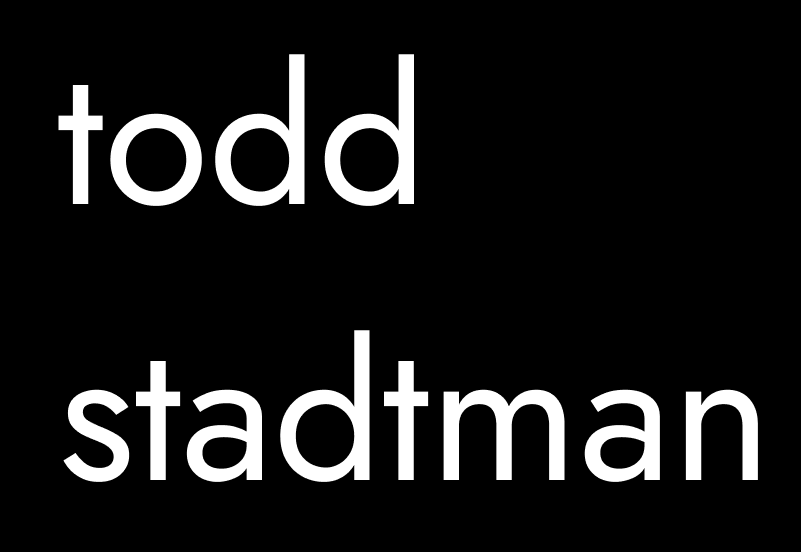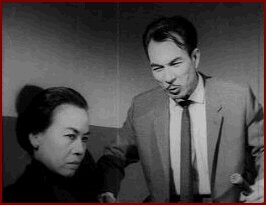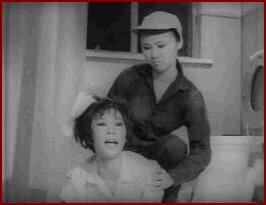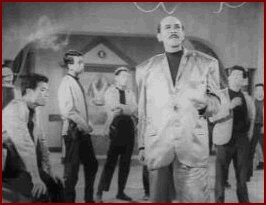|
The Dark Heroine Muk Lan-fa
In the mid sixties, Hong Kong's Cantonese language film industry, faced with the emerging dominance of the considerably more well-funded and increasingly action-oriented Mandarin language Shaw Brothers Studio - as well as changing audience tastes in a rapidly modernizing society - found itself in need of retooling its output. Melodramas, romances and period martial arts films featuring heroic female swordsmen (wuxia films) had been staples of the industry, but it now appeared that films reflecting the cosmopolitan tastes and hyperbolic pace of a more technologically driven age were in order. Of course, nothing celebrated speed, style and technology like the James Bond films, so it only made sense for Cantonese filmmakers to adapt the conventions of those films to their audience and capabilities. Furthermore, since Cantonese cinema was at the time largely driven by female stars - and appealed to a largely female audience - it also made sense that these culturally specific reimaginings of the Bond film should feature young women as their protagonists. The resulting flood of films, made mostly between 1965 and 1968, has been retroactively dubbed the "Jane Bond" films by critic Sam Ho. As anyone familiar with The Avengers' Emma Peel knows, the Jane Bond films didn't invent the idea of the high-kicking contemporary female action hero. Nor did they mark the beginning and end of such figures in Hong Kong cinema. In fact, these films can be seen as a clear precursor to the "Girls With Guns" genre that would become popular in HK during the late eighties and early nineties. But what makes them distinctive both from what came before and what followed is the fact that they were geared toward a predominately female audience and, as a result, presented their female protagonists more as role models than as repositories for male sexual fantasies. For proof of this, one need only compare the relatively chaste and buttoned-down heroine of the typical Jane Bond film to what's on view in the Shaw Brothers' anarchic Temptress of a Thousand Faces, a contemporary film that shares enough of those films' elements to seem like a pointed satire, but whose bawdy masculine sensibility plays out like a prolonged peek up Jane Bond's skirt.
One of the earliest examples of the Jane Bond film was Chor Yuen's immensely popular The Black Rose. That film starred Connie Chan Po-Chu, a young Cantonese Opera-trained actress who would soon become the biggest star in Cantonese cinema. It would follow that Chan would go on to star in a large number of the subsequent Jane Bond films (virtually claiming the fledgling genre as her own with the film Lady Bond), with the slack taken up by Josephine Siao, the star whose popularity most closely approached Chan's. One notable exception to this pattern was a series of films based on the "Dark Heroine Muk Lan-fa" pulp novels by author and prolific Shaw Brothers screenwriter Ni Kuang, which featured as their lead another young star of Cantonese cinema, Suet Nei. While still a star in her own right, Suet Nei was not the object of the type of mania that both Chan and Siao inspired (she was not, for instance, counted among the "Seven Cantonese Princesses", the official pantheon of Cantonese feminine screen royalty of which Chan and Siao were the primary members). She worked primarily in the wuxia genre, and on those occasions when she co-starred in such films with Connie Chan - such as in 1968's Dragon Fortress - she provided an effective counterpoint, projecting a grim, single-minded severity that starkly offset Chan's open-faced, swordsgirl-next-door persona. Though perhaps not quite as agile as some of her peers, her unsmiling intensity gave her a commanding physical presence that belied both her youth and diminutive stature. As such, there's a ruthlessness boiling just beneath the surface of her portrayal of the woman warrior that serves the Muk Lan-fa films well - especially as the series progressed and the producers figured out how to use her to best advantage.
Suet Nei's intensity gives the Muk Lan-fa films a drive and consistency that, more than any other element, distinguishes them in a genre that, while prolific, is pretty rigid in its conventions. The Jane Bond films of Connie Chan and Josephine Siao, for instance, are above all else Connie Chan and Josephine Siao films, and as such place those stars' likeability above considerations of narrative or consistent tone - a fact well illustrated by Chan and Siao's readiness to break into a Cantonese version of some American pop hit to a crowd of frugging teens at whatever regular intervals commerce decreed necessary, regardless of the picture's overall mood. In contrast, you will not see Suet Nei singing "Wooly Bully" - or anything else - in any one of the three Muk Lan-fa films. By way of compensation, however, you will get, in place of such jaunty musical interludes, much more of Suet Nei doing what she clearly excels at: scowling and shooting people. This palpable mean streak serves the series well, as the Muk Lan-fa films, especially after the first entry, prove to be among the most ordnance-heavy and prone to wholesale violence of all the Jane Bond films. When I reflect upon these movies, the image that will undoubtedly most frequently come to mind is that of the petite Suet Nei casually grabbing a bazooka from a nearby soldier and summarily dispatching a fleeing evildoer in a hail of flaming shrapnel. The first film in the series, The Dark Heroine Muk Lan-fa, establishes its hero as one based very closely on the template set by The Black Rose. Like the titular heroine of The Black Rose, Muk Lan-fa is a black-clad cat burglar who, with the help of her younger sister (played by Law Oi-Seung), steals from the corrupt rich to give to the poor. The film even goes so far as to have Muk Lan-fa, in a visual echo of The Black Rose's signature rose, leave an orchid ("lan") shaped dart at the scene of her crimes. However, once the police ask Muk Lan-fa to assist them in foiling some criminal interests intent on obtaining a powerful death ray watch, this Robin Hood aspect of her character promptly disappears, never to resurface again in the course of the three films. What emerges - in the case of this first effort - is a sort of a blood-and-guts take on the girl detective story. Both Muk Lan-fa and her sister, Muk Sau-jan, live at home with Mom, a circumstance which, combined with the girlish picture presented by the sisters' prim skirts and matching hair bands, contributes to the initial impression of Muk Lan-fa as either a more two-fisted version of Nancy Drew or one half of a well-armed, distaff Hardy Boys. This attempt to present the heroine as at once a wholesome teen, dutiful daughter and crime fighting badass may have been another attempt to follow the outline of Connie Chan's films - as, apparently, is a scene in which Suet Nei affects some pretty unconvincing male drag.
The Jane Bond films, in most cases, were cheap, hastily-made affairs, and The Dark Heroine Muk Lan-fa is no exception. With its monochrome photography and Spartan sets, the film bears as much similarity to the Republic serials of the forties as it does to the spy films of its era, and while watching it, there are times when it's easy to forget that you're watching a film made in the mid sixties. This, happily, is remedied by the periodic appearance of odd pop art touches, like the comic book-inspired starburst wipes that take us from one scene to the next, and the cropping up here and there of unmistakably mod pieces of fashion and furniture. Another element that anchors The Dark Heroine Muk Lan-fa firmly in the 1960s is its soundtrack, which is almost entirely pilfered from John Barry's James Bond film scores (mostly Goldfinger, as far as I can tell). Of course, this was a pretty common practice in the Hong Kong film industry at the time - as it was in the film industries of many countries with lax enforcement of international copyrights, for that matter (Turkey and India are offenders who immediately come to mind) - for Barry's themes were such an immediately identifiable shorthand for the Bond franchise's presumed glamour, excitement and sophisticated modernity that appropriating them was an irresistible means for producers of low-budget action films to cost-efficiently hitch their rickety cinematic wagons to 007's supercharged engine. Because of this, not only the Cantonese Jane Bond films of Connie Chan and Josephine Siao, but also many of the Shaw Studios' Mandarin language spy efforts from the time are peppered with stolen pieces of Barry's instrumentals. Still, of all of these films that I've seen, The Dark Heroine Muk Lan-fa makes by far the most profligate use of this music - and most eagerly courts the comparisons that doing so invites, going as far as to use the iconic James Bond theme itself to announce its heroine's entrances and exits. Though a bit rough and undeveloped in comparison to the films that would follow, The Dark Heroine Muk Lan-fa at least serves to introduce us to the players - both behind and in front of the camera - who will be with us throughout the series. In the director's chair is Law Chi - aka Joe Law - who is probably best known to Hong Kong action fans for the 1979 kung fu oddity The Crippled Masters, which went Chang Cheh's The Crippled Avengers one better by featuring actors who were actually missing limbs in the starring roles. More impressive are the names behind Dark Heroine's fight scenes: Liu Chia-Liang and Tong Gai were two of the most innovative forces in Hong Kong action choreography during the sixties and seventies, and here - as in all three Muk Lan-fa films - do double duty, both directing the kinetic girl-on-guy beat downs from behind the camera and being on their receiving end in front of it in the roles of various criminal minions (a circumstance that was apparently conducive to romance, since Tong Gai would soon after become Suet Nei's husband). Lastly, in addition to series co-star Law Oi-Seung, Dark Heroine introduces us to police detective Ko Cheung, played in each film by Kenneth Tsang Kong, who in any other of the Jane Bond films would be the heroine's love interest, but who here has no such luck, due to the fact that Muk Lan-fa's single-minded pursuit of enemy blood never really allows any such sparks to catch fire.
One actor who did not appear in the following two Muk Lan-fa films, but who deserves mention none-the-less, is Sek Kin. Much like Bollywood's Amrish Puri, who, despite having appeared in hundreds of films in his native India, would be absolutely unknown to Western audiences if not for his appearance as Mola Ram in Indiana Jones and the Temple of Doom, Sek Kin's Western Q factor depends entirely on one iconic villain role, that of Han in Enter The Dragon. Much like Puri, Sek-kin built up a mammoth filmography while serving as a sort of in-house Simon Legree for his local film industry, menacing Connie Chan, Josephine Siao and a host of other righteous young heroines in film after film after film. That he was chosen to leer and snigger at Suet Nei in her initial outing as a Jane Bond heroine almost seems like a sort of right of passage for the actress, and the veteran, as usual, does not disappoint. Again like Puri, when Sek Kin is in a picture, there's no risk of you ever losing track of who the bad guy is; all you have to do is follow the twitching pencil mustache. Though The Dark Heroine Muk Lan-fa and its sequels were clearly made on a very tight schedule (all three were released within a few months of each other, between March of 1966 and March of 1967), this did not prevent the films' producers from making some obvious changes and refinements to the elements of the series as it progressed. In the second film, The Dark Heroine Muk Lan-fa Shattered the Black Dragon Gang, mom is out of the picture, and the Muk sisters are now on their own, living in a palatial home with all the most stylish modern appointments. In addition to this, Law Oi-Seung's Muk Sau-jan is placed in a somewhat less active role, making Muk Lan-fa more of a lone wolf figure. Both of these changes bring the character of Muk Lan-fa much closer to the rootless and personally unconnected model of the Western espionage hero, whose actions are untethered by deep bonds of family and community, and as such render her considerably more free to explore heightened levels of risk, ruthlessness and mayhem. The filmmakers make the most of this character makeover by infusing Black Dragon Gang with an exponentially increased level of violence, as well as a conspicuous inflation of both the number and size of the armaments on display. While there is always a lot of gun waving going on in the Jane Bond films, when it comes down to settling things, the violence is more often than not in the form of hand-to-hand combat; but in this instance - despite both the fight choreography talent on hand and the star's obvious gameness and physical ability - it's the automatic weapons (and the bazookas), rather than the fists, that do most of the talking. In this way, Black Dragon Gang, more than any other Jane Bond film that I've seen, places a hard wall between itself and the traditions of honor and chivalry played out in the stately wuxia films from which the genre's stars emerged.
In addition to this turn toward amoral bloodletting, The Dark Heroine Muk Lan-fa Shattered the Black Dragon Gang abounds with visual evidence of the series' head first dive into the late 20th century. This includes not just the Muk sisters' aforementioned mod inflected digs, but also the distinctly Carnaby Street turn of their wardrobes, exemplified by the subtle substitution of slit-eyed, plastic wrap-around sunglasses for the matching hair bands they wore in the first picture. And the villains themselves, The Black Dragon Gang, are - especially in contrast to the more traditional, suit-wearing goons of the first movie - a walking, breathing embodiment of self consciously campy sixties excess: an army of pompadoured, scooter riding foot soldiers in matching metallic sport coats whose leader is distinguished mainly by the enormous size of his shoulder pads (think David Byrne's giant suit in Stop Making Sense and you'll pretty much get the picture). We meet that leader in classic over-the-top comic book fashion, as he throws darts into a life-sized portrait of Muk Lan-fa, squirreled away in a space age super villain lair with all the trimmings, including dozens of superfluous control panels with flashing lights, two-way TV screens, secret corridors, hidden sliding doors and high tech booby traps. (Of course, not all of the film's attempts to bring us into the space age are as spirited; witness, for instance, the half-hearted pass at updating the police captain's office by placing a child's toy rocket on his desk.) With its confident direction, brisk pacing, and a performance by Suet Nei that makes the most of her steely-eyed mean girl persona, The Dark Heroine Muk Lan-fa Shattered the Black Dragon Gang shows all the signs of the Muk Lan-fa series coming into its own and, as if in self-congratulatory acknowledgement of that, the film's soundtrack is almost completely free of stolen 007 music. There is also evidence of a somewhat more generous budget this time around, as the climactic battle at the Black Dragon Gang's HQ, stocked with a large number of high-flying and acrobatically dying extras, is pretty spectacular by Cantonese cinema standards. And while it's true that, in turning its back somewhat on the traditional values that inform other films from its genre, it loses some of the charm that still makes many of those films endearing, it can't be denied that its a cracking entertainment, and comes closest of any Cantonese film I've seen to the more free-wheeling brand of excitement that was increasingly being peddled in the Mandarin language output from the Shaw Brothers' Movie Town.
The third and final film in the Muk Lan-fa series, Lady in Black Cracks the Gate of Hell, doesn't make any essential changes to the formula established in the previous film, but does change the focus somewhat. It seems that there was a decision to feature Law Oi-Seung more prominently, and so we get to see Muk Sau-jan strike out on her own, conducting her own black-clad prowlings and even, at one point, rescuing the captive Muk Lan-fa and Ko Cheung from the villain's clutches. Despite her heroism, Muk Sau-jan is presented as a bit of a comic bumbler, and her prominence here seems to give rise to some whimsical touches, such as a last minute escape from a high-rise using an umbrella as a parachute and a cliffhanger in the office of an evil, eye-patch wearing dentist. Law Oi-Seung is a plenty appealing actress in her own right, with her own arsenal of distinctive quirks, so none of this takes away from the film's entertainment value - but coming to this film from The Dark Heroine Muk Lan-fa Shattered the Black Dragon Gang, it's hard not to feel the comparative lack of Suet Nei's commanding presence. Also contributing to Gate of Hell being a slightly less satisfying watch than its predecessor is the fact that the villains here are considerably less colorful than those in Black Dragon Gang (In fact, once the minions are dispatched, all we're left with is a fleeing fat guy in Bermuda shorts). Nonetheless, Gate of Hell fully delivers on the violent action, offering up a climax that's something of a flea market Thunderball, with Muk Lan-fa, Muk Sau-jan and Ko Cheung donning scuba gear to make an aquatic assault on the island on which the baddies are converging. When all is accounted for, the film maintains enough of a level of consistency with Black Dragon Gang to make you wonder what a fourth - or even a fifth - Muk Lan-fa film might have had to offer. Unfortunately, at the time of Lady in Black Cracks the Gate of Hell's release in 1967, the clock was ticking for the Cantonese film industry, and by 1970 it would cease to exist as a distinct entity within the larger context of HK cinema, succumbing to the pressures of competition with the Shaw Brothers juggernaut. With the industry's demise, some of its stars also decided to bow out, including Suet Nei, who retired from film at the rheumy old age of 22. One player who did remain on the public stage, however, is the Dark Heroine herself, thanks to the continued output of dozens of Muk Lan-fa novels, as well as a television series in the eighties. Of course, that Muk Lan-fa would persevere is not surprising; as Sam Ho points out, her name is derived from that of Hua Mulan, who, despite her cuddly treatment at the hands of Disney, was most likely the archetype for all the high-flying female badasses who would follow her in both Chinese folklore and Hong Kong cinema. It takes a lot more than a one armed swordsman to take out a lady warrior with a pedigree like that.
- Todd Stadtman 1/26/08
|
||
|
All text content � Copyright 2007-2008 Todd Stadtman. All rights reserved. |




















